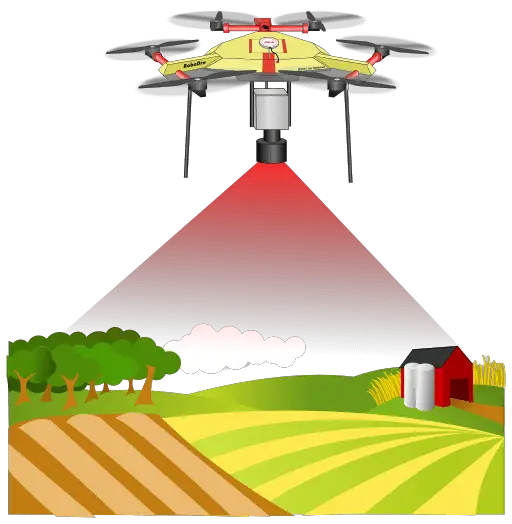Agri drones are becoming increasingly popular
They have the ability to help farmers improve their farming practices.
These drones offer the latest technology and features to help farmers get the job done efficiently and effectively.
Some of the top models of agri drones include:
DJI Agras T20 – Best for crop spraying and dusting
DJI Matrice 300 RTK – Best for precision agriculture and mapping
DJI Phantom 4 RTK – Best for mapping and surveying
Parrot Bluegrass Fields – Best for crop scouting and mapping
Yuneec H520 – Best for inspection and monitoring of livestock and crops
These drones are equipped with advanced features such as mapping, data analysis, and weather resistance, making them suitable for a wide range of farming activities.
It’s important to consider your budget and specific needs when choosing the best drone for agriculture.
Agricultural drones are unmanned aerial vehicles (UAVs) that are equipped with specialized sensors and cameras to collect data from different areas of a farm.
This data can be used for crop health monitoring, soil analysis, pest detection, plant counting, and mapping.
The drones fly autonomously over the fields, collecting imagery and data in real-time.
How do agri drones work?
Agricultural drones can be used for precision agriculture, efficiently dispersing weed control or fertilizers, and optimizing field management.
The results include reduced operation costs, improved crop quality, and increased yield rate.
For example, the Agras line of spraying drones from DJI can help precisely deliver fertilizer, herbicide, fungicide, pesticide, seeds, and desiccants.
The efficient application of these chemicals is a persistent challenge for any grower.
However, the right farming drones and spraying payloads can distribute chemicals evenly and efficiently.
In addition to covering more land at a lower price, drone spraying can offer major environmental benefits.
Drones can more efficiently distribute pesticides so that you use less for the same overall effect.
UAV seeding can also help maximize the efficient use of your land.
These are some common Disadvantages of using agri drones.
Special knowledge and skills required: Operating drones for agricultural purposes requires expertise and, in some cases, certification.
A person must know how to plan flight paths, test flight equipment, carry out aerial surveys, gather digital images and data, maintain and repair drones, produce maps based on flight data, and interpret data.
Limited flight time: Most agricultural drones have a limited flight time of between 10 and 25 minutes. This can be a disadvantage for farmers with large fields as it may not be enough time to cover the entire area.
Vulnerable to adverse weather conditions: Drones should not be flown in rain, high humidity conditions, fog, or snowfall. This is because it may result in losing or crashing the drone, spoiling the quality of images, or spraying chemicals that will need re-applying in the future.
Expensive: Good agri drones can be expensive. For example, camera drones with a capable RGB camera can cost at least £300.
It’s important to weigh the pros and cons before deciding whether or not to use agri drones on your farm.
Image credit
Juhele, CC0, via Wikimedia Commons

